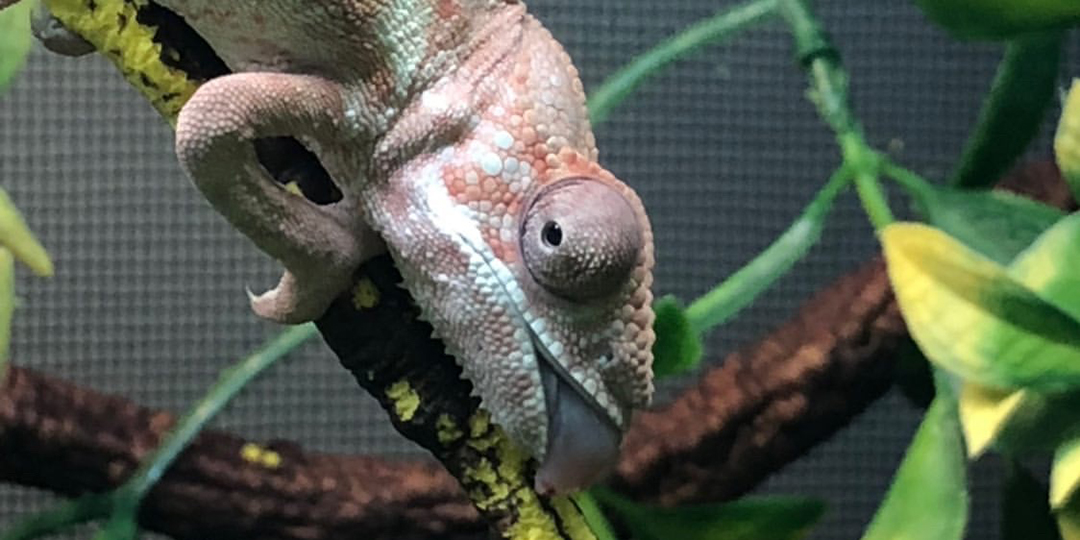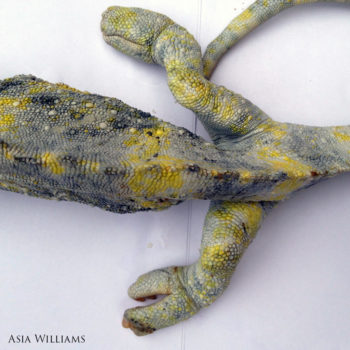Metabolic Bone Disease (MBD)
Description
Metabolic Bone Disease is a disorder where the bones in the chameleon’s body grow without the necessary calcium to make them strong and rigid. This is akin to the human condition known as Ricketts. This is a disorder known only in captive chameleons and is generally caused by a lack of either vitamin D3 or Calcium.
Vitamin D3 is necessary for the body to absorb calcium from the gut. Without vitamin D3 calcium flows uselessly through the digestive track and is pooped out. Vitamin D3 is created by the body from specific wavelengths of UVB light. Vitamin D3 can also be provided synthetically through the diet. Please see the sections on UVB and supplementation to get the full story.
Not only does the calcium provide structure for the body, but the skeleton is where calcium is stored for the body to use for internal organs to work properly As organs are the top priority, if there is a calcium shortage, the bones have to do with out.
Without sufficient calcium, the bones are flexible and break easily. It is not uncommon for chameleons with MBD to have multiple breaks in their legs from just trying to crawl around.
MBD is a slow and painful killer that is completely avoidable with simple proper husbandry. But this information is often not provided to first time chameleon keepers. it then becomes a race against time for those new keepers to find a chameleon savvy information source to get things on track.
Symptoms
MBD can be identified by a chameleon having bowed elbows, curved spine, improperly working jaw, or the inability to hold itself up. Anything that requires a strong bone for structure will be difficult to impossible for the chameleon to accomplish.
Treatment
MBD can be halted at any point by beginning the get calcium into the system. Though MBD can be reversed for areas that are still growing, There is now way to reverse growth that has already happened. Unfortunately, the body does not break down and rebuilt incorrectly built bones. So legs that have grown in with multiple healed breaks and a jaw that is warped will stay as they are. This necessitates an owner willing to give extra special attention to the feeding and care of the chameleon for the rest of its life.
The chameleon must have calcium in its diet and a source of vitamin D3. Ideally, the vitamin D3 comes from a UVB light source, but D3 in the supplement can do the job.
A veterinarian can give an initial calcium boost to jump start the process.






